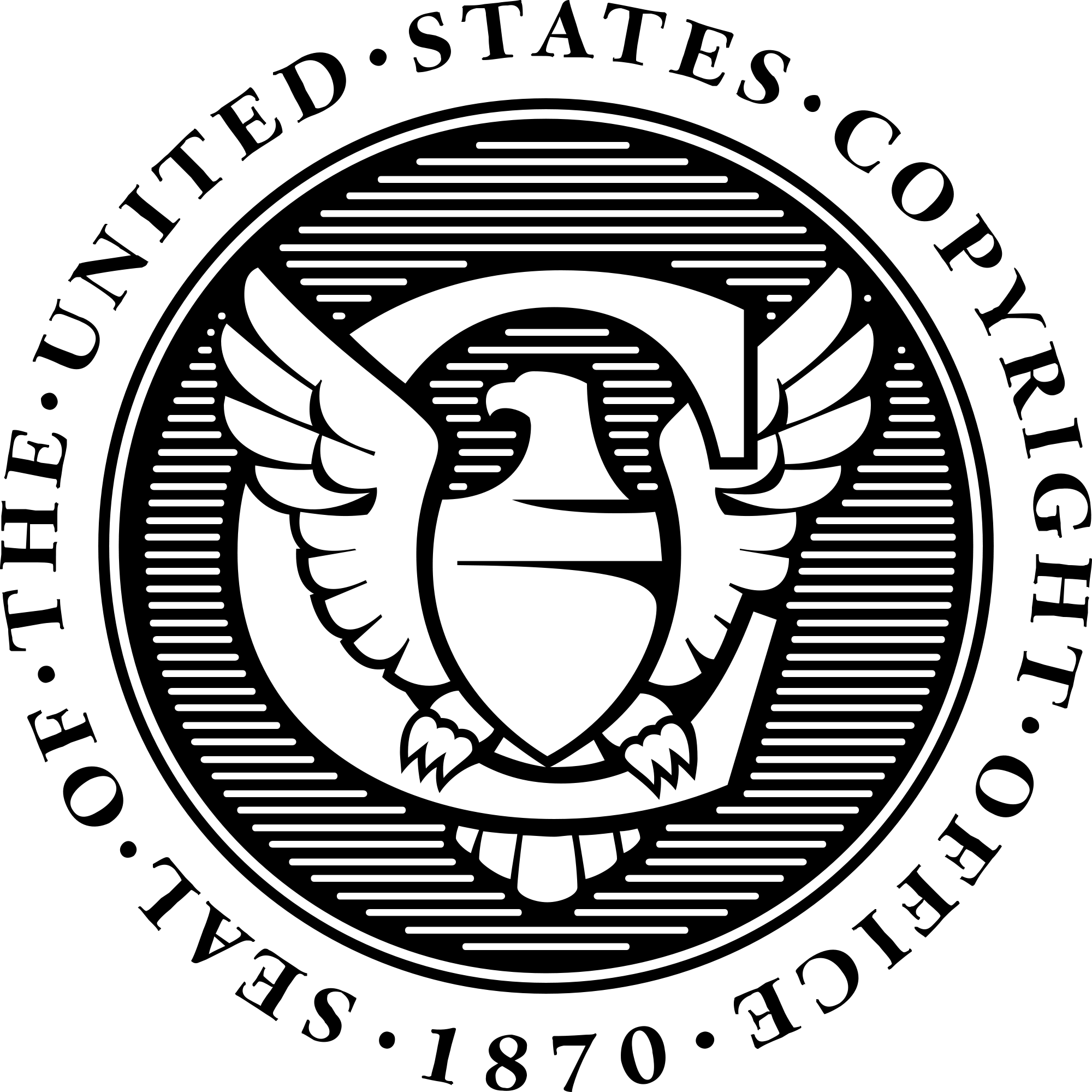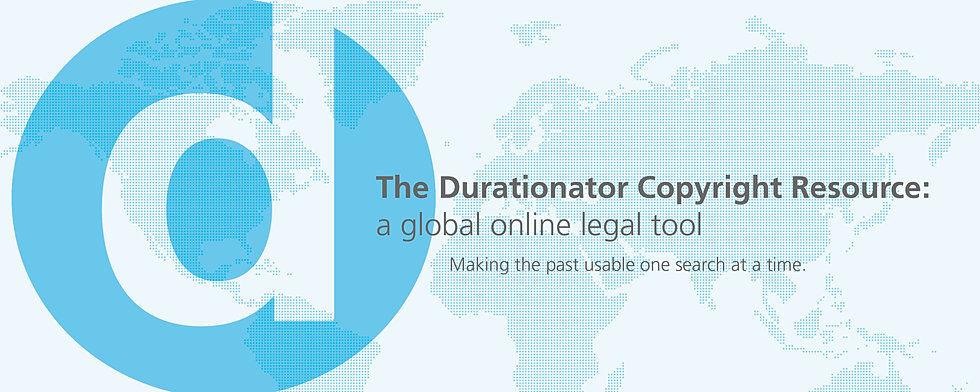 Copyright laws provide authors with an incentive to create new works by giving them exclusive control over their creations’ use and profits for a fixed period. The law of copyright applies to authorship, human creations that fix an idea in a specific expression. It is the expression rather than the idea that is protected. In order to qualify for copyright protection, the expression must not be a useful item. (Useful items are covered by patent law instead.) The following elements must be met for a work of authorship to be eligible for copyright:
Copyright laws provide authors with an incentive to create new works by giving them exclusive control over their creations’ use and profits for a fixed period. The law of copyright applies to authorship, human creations that fix an idea in a specific expression. It is the expression rather than the idea that is protected. In order to qualify for copyright protection, the expression must not be a useful item. (Useful items are covered by patent law instead.) The following elements must be met for a work of authorship to be eligible for copyright:
Photo Credit: Library of Congress
Copyright is created immediately as soon as the work is created and fixed. Unlike older copyright statutes, the 1976 Copyright Act does not require the notice "Copyright," the © "C in a circle," or registration with the U.S. Copyright Office. However, you do have to have a registration in order to file a lawsuit for copyright infringement.
Copyright material can be found in the Government Documents Area of the ground floor of Helm Library. Information Circulars from the Copyright Office of the Library of Congress are shelved at LC 3.4/2. Copyright law is contained in Title 17 of the United States Code on the web or the printed version of Title 17 of the United States Code Annotated in the Law Collection. Selected forms, that may be photocopied, are located at the Reference Desk, first floor of Helm Library. If you have Adobe Acrobat Reader installed on your computer you may also print copyright application forms from the Copyright Office Home Page.
[1]. Mark Radcliffe, Copyright Law, Findlaw Professionals, available at http://corporate.findlaw.com/intellectual-property/copyright-law.html. Excerpted from Mark Radcliffe, The Multimedia Law and Business Handbook (Ladera Press 1999).
[2] 17 United States Code Section 102.

 Alternatives to Copyright
Alternatives to Copyright
There is a myth that a so-called "poor man's copyright" exists where you can mail yourself a copy of your work (and not open the envelope) to establish that you own it. This is absolutely false. The only way to obtain a copyright -- and be able to file a lawsuit -- is to register your copyright with the U.S. Copyright Office. While you are not eligible for statutory damages if the work is registered after infringement, you can still register and then sue at any time.
.jpg)
The following list contains codes of best practices for fair use in a series sponsored by the Center for Social Media. The reason for these best practice codes is because courts deciding fair use cases specifically looks to the best practices of the field. In the past, it has mostly been the content owners who have defined the practices. The idea of this series of codes is to create best practices multiple fields and disciplines that are based upon the existing law, that can be found and followed fairly easily, and that create a level playing field between content owners and content users. The people involved in this series are absolutely first-rate, and are led by distinguished intellectual property experts Peter Jaszi and Patricia Aufderheide.
Best practice codes in this series include:
The Code of Best Practices in Fair Use for Media Literacy Education was the third one to be released. However, the interdisciplinary nature of this code, and the large number of organizations that are signatories or have endorsed it, make this the most significant guides. http://centerforsocialmedia.org/fair-use/related-materials/codes/code-best-practices-fair-use-media-literacy-education. Signatories include:
The most significant signatory is the National Council of Teachers of English. This means that the code is going to be taught by a lot of people at the secondary and and university level. Also, the Association of College & Research Libraries (while not a signatory) has endorsed the guidelines.
While not part of this series, the Society of American Archivists released Orphen Works: Statement of Best Practices in 2009. Peter Jaszi, Peter Hirtle, and others who took part in the Center for Social Media project were involved with this work.
The Center for Social Media at American University has extensive teaching materials and most of the best practices on its website. The site includes slides, lecture notes, guidelines for in-class discussions, exercises, assignments, and grading rubrics dealing with copyright and fair use. There are a number of other open-access teaching materials and lesson plans, videos, and other resources not produced by the Center but housed at (or linked from) their website. The best addresses are http://centerforsocialmedia.org/fair-use/related-materials/teaching-materials/fair-use-teaching-tools and http://centerforsocialmedia.org/fair-use/related-materials.
Another good teaching resource is Fair Use Language for Course Syllabi from the University Film and Video Association. This website is found at http://centerforsocialmedia.org/fair-use/related-materials/teaching-materials/fair-use-language-course-syllabi.
It is important to remember that not all best practice guides are created equal. There are many other guides that I haven’t mentioned. However, the series being put out now with Peter Jaszi is very important, and will help to restate and redefine the law.
The following guide was created by Lolly Gasaway of the University of North Carolina, and is used by permission.
Definition: A public domain work is a creative work that is not protected by copyright and which may be freely used by everyone. The reasons that the work is not protected include:
| Date of Work | Protected From | Term |
|---|---|---|
| Created 1-1-78 or after | When work is fixed in tangible medium of expression | Life + 70 years1(or if work of corporate authorship, the shorter of 95 years from publication, or 120 years from creation2 |
| Published on or before 1-1-1923 | In public domain | None |
| Published between 1-1-1923 and 12-31-1963 | When published with notice3 | 28 years + could be renewed for 47 years, now extended by 20 years for a total renewal of 67 years. If not so renewed, now in public domain |
| Published between 1-1-1964 and 12-31-1977 | When published with notice | 28 years for first term; now automatic extension of 67 years for second term |
| Created before 1-1-78 but not published | 1-1-1978, the effective date of the 1976 Act, which eliminated common law copyright | Life + 70 years or 12-31-2002, whichever is greater |
| Created before 1-1-1978 but published between then and 12-31-2002 | 1-1-1978, the effective date of the 1976 Act, which eliminated common law copyright | Life + 70 years or 12-31-2047, whichever is greater |
1 Term of joint works is measured by life of the longest-lived author.
2 Works for hire, anonymous and pseudonymous works also have this term. 17 U.S.C. § 302(c).
3 Under the 1909 Act, works published without notice went into the public domain upon publication. Works published without notice between 1-1-78 and 3-1-89, effective date of the Berne Convention Implementation Act, retained copyright only if efforts to correct the accidental omission of notice was made within five years, such as by placing notice on unsold copies. 17 U.S.C. § 405.
(Notes courtesy of Professor Tom Field, Franklin Pierce Law Center, and Lolly Gasaway)
Last updated 11-04-03
* Chart may be freely duplicated or linked to for nonprofit purposes. No permission needed. Please include web address on all reproductions of chart so recipients know where to find any updates. http://www.unc.edu/~unclng/public-d.htm.
The status of an item that was published in another country is often difficult to determine. But it is even more nebulous when dealing with items that lapsed into the Public Domain the U.S., but were still protected in their country of origin. Here is what you need to know about copyright restoration.
Copyright restoration occurred under the General Agreement on Tariffs and Trade (GATT), in the Uruguay Round Agreements Act, 17 U.S. Code Appendix L, 108 Stat. 4809 (December 8, 1994). The statute became effective on January 1, 1996. It extended copyright to foreign items that had formerly been in the public domain in the US because formalities were not taken. The statute requires:
It is also important to determine if there were copyright treaties in effect between the United States and the country of origin:
Here is an example to help illustrate how copyright restoration works. In 1937, Olaf Stapledon published his science-fiction novel Star Maker. This book had a substantial effect on the authors of the "golden age" of science fiction and later, including Arthur C. Clark, Robert Heinlein, Brian Aldiss, and Stanislow Lem. H.G. Wells was also a big fan, as were Virginia Wolfe, Doris Lessing, and Jorge Luis Borges (who wrote a prologue for the 1965 edition). The book was first published in the United Kingdom. So what is its copyright status in the U.S.? Before copyright restoration, the following factors come into play:
Under copyright renewal, however, the work came back under copyright protection:
Thus the copyright renewal act would have extended protection to Star Maker until 2000. However, that is not the end of the story.
The other law that affects this work is the Sonny Bono Copyright Restoration Act of 1998, 112 Stat. 2827 (1998). This statute added an additional 20 years onto all copyright periods. Thus, instead of Star Maker entering the public domain in 2000, it will not enter the public domain until 2020. (And had it been published in the U.S., it would have been under copyright until 2032.)
For a complete run-down, see Public Domain Sherpa. (2016). Copyright restoration and foreign works: be careful. http://www.publicdomainsherpa.com/copyright-restoration.html.


Permission to use a piece of intellectual property is called a "License." This is the term used for copyright, patent, trademark, and trade secret. A license is a type of contract that allows a party (called a "Licensee") to use intellectual property under conditions set by the IP owner ("Licensor"). Any use of the property that is within the terms of the contract is considered legal and not infringement. Any use that goes beyond the scope of the license agreement constitutes infringement.
If permitted by the license agreement, a licensee may be able to sub-license the intellectual property. Some license agreements allow sub-licenses, while others prohibit this practice. But in no event can the licensee pass along to a sub-licensee more rights than he or she has in the original license agreement.

